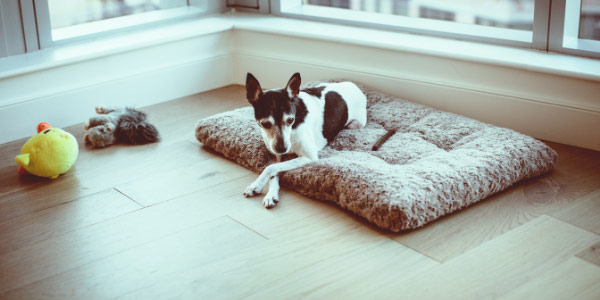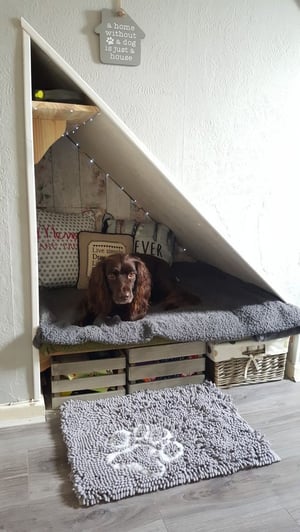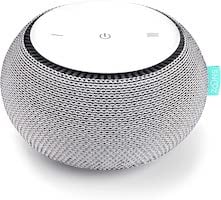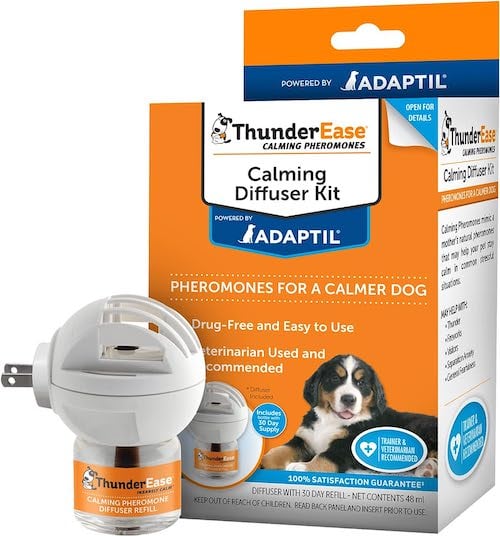 Sometimes your dog just needs a break! Your dog might be naturally shy or nervous around different kinds of people, be fearful of loud noises or events, or dealing with anxiety.
Sometimes your dog just needs a break! Your dog might be naturally shy or nervous around different kinds of people, be fearful of loud noises or events, or dealing with anxiety.
Creating a place your dog can escape to for some alone time reduces that anxiety and helps your dog cope with stressful situations.
Even if your dog doesn’t suffer from fear or anxiety, it’s reassuring to have their own safe haven where they can go when they just want to relax for a bit.
By giving your dog the choice to leave a situation, you increase their confidence in dealing with uncertain or stressful situations.
Your dog’s safe space is also a wonderful tool to teach your children boundaries when it comes to interacting with your dog — if the dog is in their safe space, the dog is wanting to be alone and not pet or played with. This can help prevent unfortunate bite incidents between the family dog and children.
What Is a Dog's 'Safe Space'?
A dog’s safe space is very similar to a designated “puppy zone,” the only real difference being that you aren’t providing an indoor potty area since an adult dog should be fully housebroken, and the dog has access in and out of their space at all times.
Think of it as an extended crate area; you want your dog to view their safe space with just as much positivity as their crate the BEST place ever! In fact, many dog owners set up a safe space in the area around their dog’s crate.
By providing your dog with a special area that they can escape to when needed, your dog will learn to self-soothe and become more confident when confronted with stressful situations (such as thunderstorms, fireworks, holiday parties, new baby, etc.)
By giving your dog the choice to leave a situation, you increase
their confidence in dealing with uncertain or stressful situations.
Your dog’s safe space should be:
Comfortable for Your Dog
- The temperature should be cool in the summer and warm in the winter. There should be enough space for your pup to stretch out and sleep in peace, with suitable bedding for them to relax on.
- Take note of where your dog naturally goes when they need a break. There might be a few different places around the house where they feel most comfortable — the corner of the family room might be their place of choice most of the time, but they might prefer a second, more quiet area like the guest bedroom when you're having a big get-together with your friends. And that's great; you can set up more than one safe space for your dog!
Stocked with Food and Water
- Make sure there is a spill-proof water bowl in your dog’s safe space.
- I highly recommend feeding your dog in their safe space to build a positive association with the area and because it provides them with a stress-free mealtime away from the hustle and bustle of the household. This can help prevent resource guarding incidents if your dog guards their food bowl and you have children in your family.
Easily Accessible
- Your dog should always have the choice of when they want to enter and exit their safe space.
- This area should not be used for time-outs.
- The safe space can be used for safe confinement while you're away from home, as long as your dog is happily used to spending time confined while alone.
- Make sure their area is not totally isolated — dogs are very social, and while they might want a break from all the activity, they may still want to be near their family.
Quiet and Stress-Free
A safe space is especially useful for dogs dealing with noise phobias, like fireworks. Set up their safe space away from outside noise as much as possible, away from any windows.
You can always mask any outside noises by having a fan or sound machine running for white noise. I use the SNOOZ white noise machine for my dogs' safe space (and at nighttime for myself).
Certain kinds of music have been shown to reduce stress for dogs, including classical, reggae, and soft rock. Read more about what music works best in our article "How to Use Music to Calm Your Anxious Dog."
If you have an anxious dog, plugging in a pheromone diffuser like the one by ThunderEase near their safe space may help immensely.
Provide Mental Enrichment
Make sure to provide safe and appropriate chew toys for your dog in their safe space. Not only does this prevent them from chewing on inappropriate items, but it also helps to tire them out by working their brains. Enrichment activities help lessen stress and anxiety by giving your dog a natural outlet for their instinctual needs.
Find lots of tips to increase your dog's daily enrichment in "Dog Enrichment: Toys, Games, and DIY Ideas."
Dog-Proof
Double-check your dog's safe space to ensure it's free and clear of any safety hazards or items that can be harmful to your dog. These include toxic plants, power cords and cables, suffocation hazards like plastic food bags, and more!
Review this dog-proofing checklist to make sure your dog's safe space is actually safe.
How to Get Your Dog Used to Their Safe Space
- Introduce your dog to their safe space(s) as early as possible in their life. If you don't have one before they enter your home, sometimes they naturally pick their own, so go with it!
- Give your dog their regular meals (preferably via a stuffed Toppl or another work-to-eat toy) in their safe space.
- Any time they choose to go into their space, toss a treat to them or give them a long-lasting chew to work on.
- Don’t use the safe space as an area that you play rambunctiously with your pup. It’s meant to be a calm and relaxing area away from human interference. If you want to play games with your pup, just do so outside of their safe space.
If you notice your dog is becoming stressed by nearby activity or any outside noise, simply encourage them to go into their safe space and settle with a treat or long-lasting chew. Praise them calmly when they settle in their safe zone and make sure that no one goes in and bothers them when they are there.






